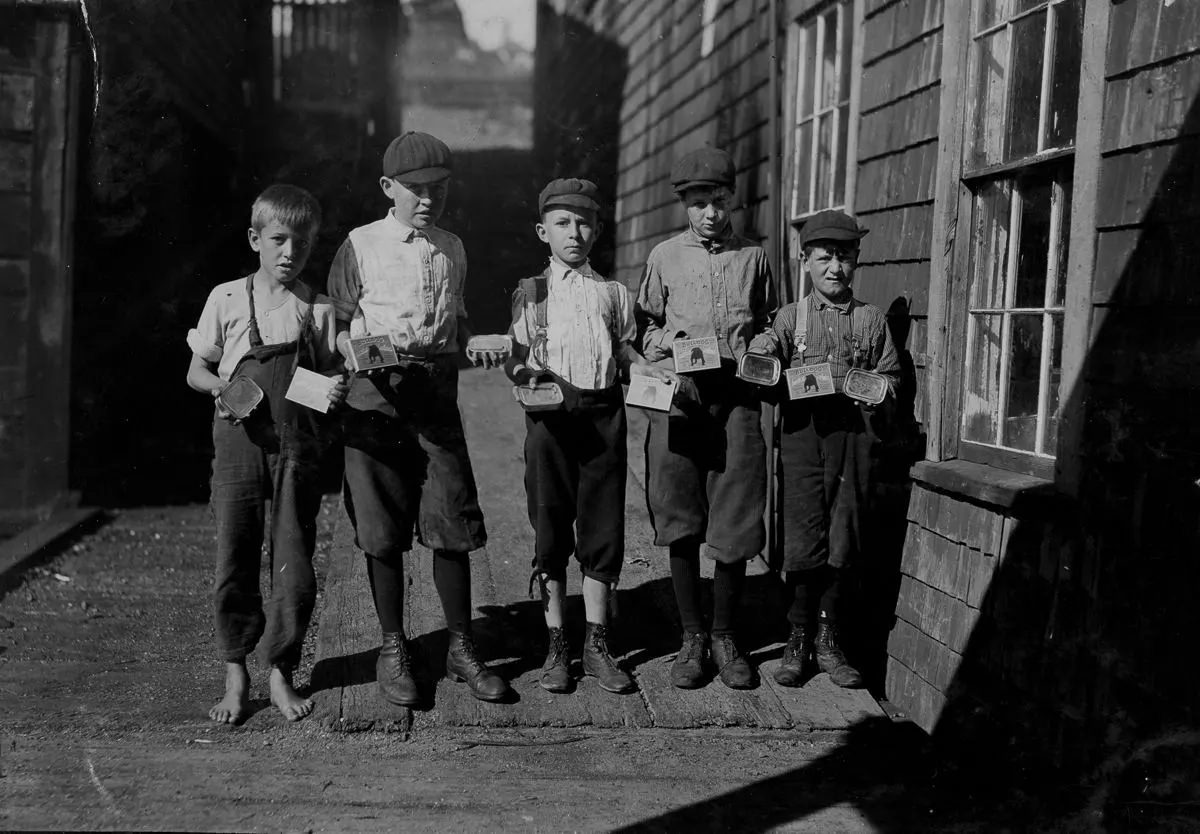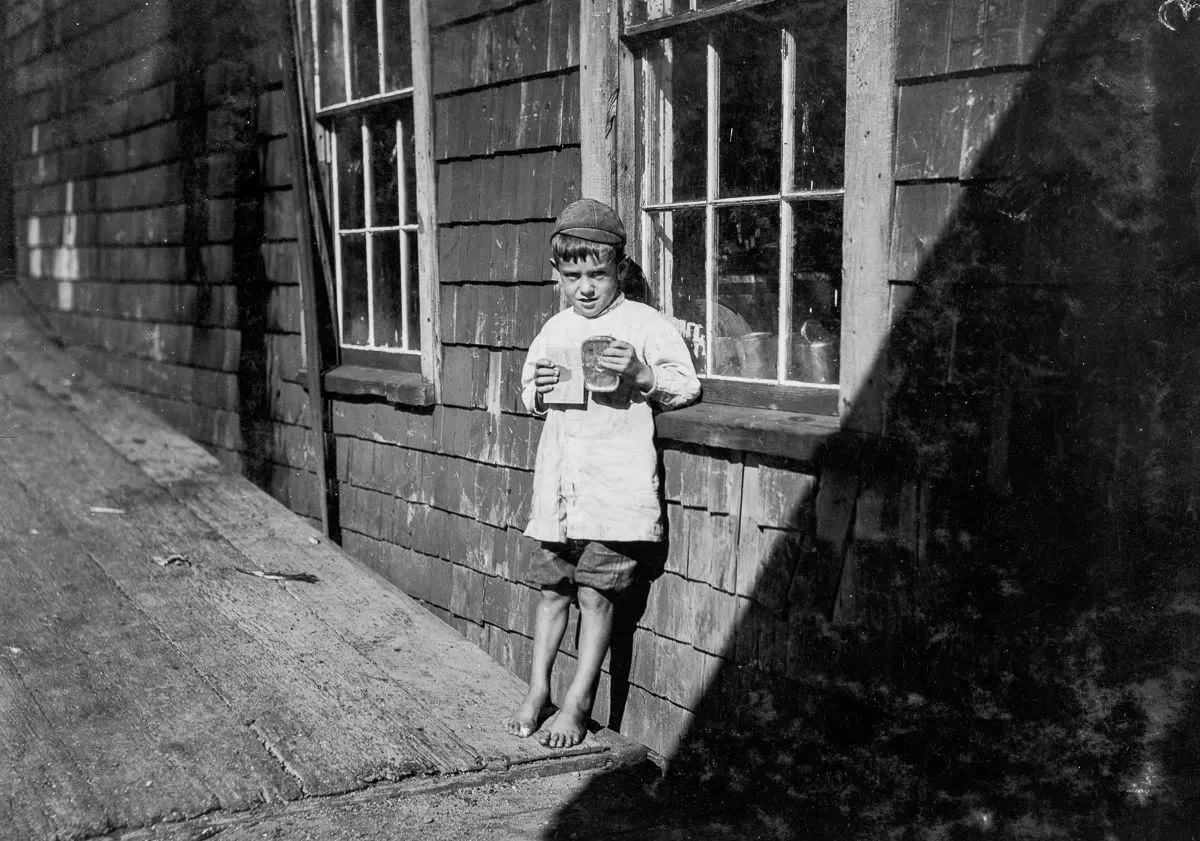The American Child Protection Council hired Lewis Hine in 1908 to document the working conditions and exploitation of children (or as they were called underage laborers) in the United States. He spoke with thousands of children in working settings throughout the country and documented their harsh reality through photographs such as bike messengers, newsies, and miners. Hine visited Eastport, where many children were still working in the sardine industry.
Maine’s Eastport consists of a small group of islands. The sardine factories employed many children as a cheap labor force. One day of filleting sardines could earn them $1,50. Most of them were employed as “cutters,” who removed the heads and tails from freshly caught fish before passing them on to be canned, packed, and shipped. The work inside the factories was very demanding. There was a need for speed and care to avoid packing part of a finger with sardines. The packing hours lasted until there were no more fish to pack. Factory workers handled each sardine can several times before it was finally shipped to market due to the absence of automation.
The children Hine interviewed suffered painful cuts frequently from working long shifts with sharp knives in cramped, slippery quarters and being incentivized to prepare as many sardines as possible. His photographs accurately portrayed the heavy conditions for the children, with their blank faces and wounded hands. The American Child Protection council ultimately used these images as evidence to pass a law prohibiting children from working in factories.
#1 Minnie Thomas, 9 years old, showing average size of sardine knife used in cutting.
#2 Sardine canneries on the waterfront in Eastport, Maine.
#3 Fulsom McCutcheon, 11 years old, has been working at the covering machines in Eastport canning factory, also cutting some.
#4 Some of the cartoners, not the youngest, at Seacoast Canning Co., Factory #2.
#5 Richard Mills, eight years old, showing a severely cut finger.”
#6 Elsie Shaw, a 6-year-old cartoner in the summer, Seacoast Canning Co., Factory #2.
#7 Nan de Gallant, 9-year-old cartoner, Seacoast Canning Co., Factory #2.
#8 5 year old Preston, a young cartoner.
#9 George Goodell, and butcher knife used by many children.
#10 Three cutters in Factory #7, Seacoast Canning Co., Eastport, Me.

They work regularly whenever there are fish. (Note the knives they use.) Back of them and under foot is refuse. On the right hand is Grayson Forsythe, 7 years old. Middle is George Goodell, 9 years old, finger badly cut and wrapped up. Said, ‘the salt gets into the cut.’ Said he makes $1.50 some days. Left end, Clarence Goodell, 6 years, helps brother.
#11 Interior of a cutting shed in Maine. Young cutters at work, Clarence, 8 years, and Minnie, 9 years.
#12 Housing conditions in settlement at Seacoast Cannery #7, not very good.
#13 Group of young cutters, Seacoast Canning Co., Factory #2, waiting for more fish.
#14 Wilfred Clark, 10 years old, going home at noon, after cutting five boxes of fish during the morning.
#15 Shows the way they cut the fish in sardine canneries.
#16 A group of young cartoners in Seacoast Canneries, #4., not the youngest.”
#17 Phoebe Thomas, 8 year old Syrian girl, running home from the factory all alone, her hand and arm bathed with blood, crying at the top of her voice.
#18 Phoebe’s thumb, a week after the accident. She was back at the factory that day, using the same big knife.
#19 Butcher knife used by Ralph, a young cutter in a canning company and a badly cut finger. S
#20 Minnie Thomas, a 9 year old girl, works regularly in Seacoast Canning Co., Factory #7, mostly in the packing room, and when very busy works nights.

Cuts some, and also cartons. Her mother said, ‘Some of the children cut their fingers half off.’ Her father and grandfather are in the factory. She lives in Grand Manan in the winter with her aunt, father and mother live here. She says she earns $2.00 some days packing, not so much when she cartons.























